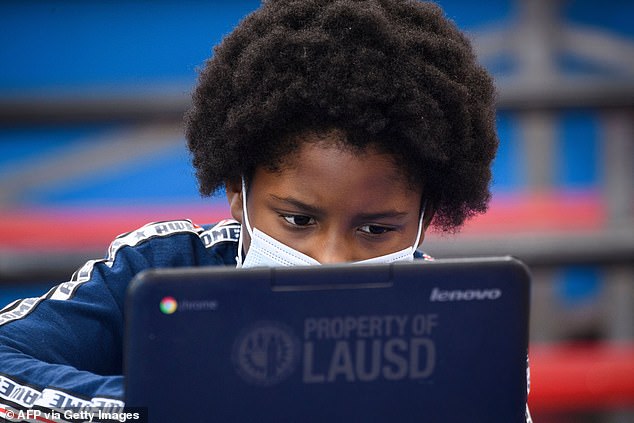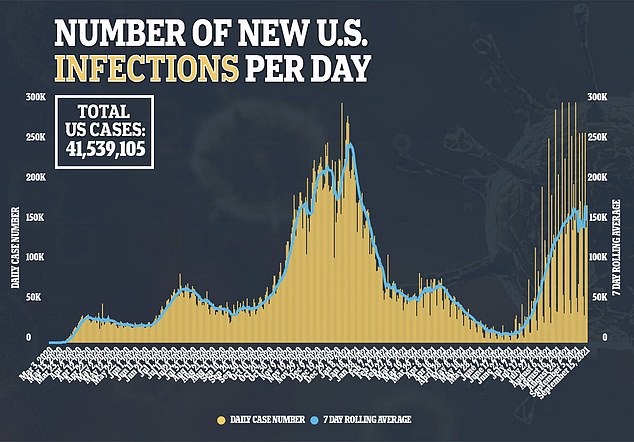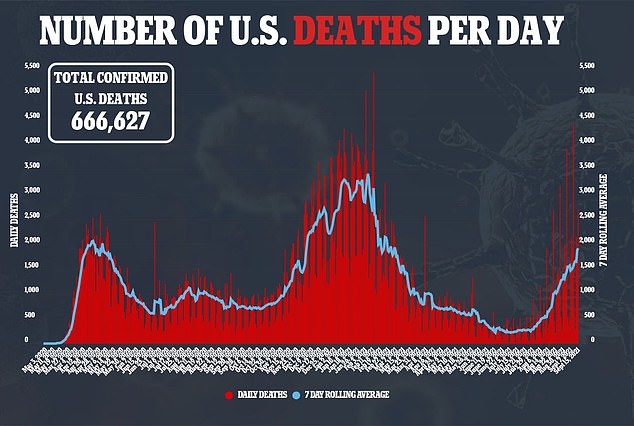Lifestyle changes caused by the COVID-19 pandemic increased the rate of elementary schoolers who developed nearsightedness, a new study finds.
Researchers from Sun Yat-Sen University in Guangdong, China, found that the number of children diagnosed with nearsightedness – also known as myopia – in 2020 was double compared to 2019.
They ascribe the increase to the pandemic and children spending more time using screens due to virtual learning and less time outdoors.
The team notes that this is just another example of the many long-term effects the pandemic had on people around the world, which will exist well beyond 2020.

A new study found that in 2019, 7.5% of children who did not have myopia a year before developed the condition. That figure doubled to 15% in 2020

An increase in screen time for many children during the pandemic due to virtual learning and less outdoors activities had a negative impact on their eye health, the study finds. Pictured: A student in Los Angeles, California, attends virtual classes in February
The research team, whose findings were published on Thursday in JAMA Ophthalmology, had been studying the development of nearsightedness in young children even before the pandemic.
In 2018, they tested a group of more than 1,000 children for the condition.
They tested a group of students in grade 2 and then tested them for myopia once again when they entered grade 3 in 2019.
Another group of other 1,000 grade 2 students were gathered to add to the study in 2019.
The COVID-19 pandemic would begin in Wuhan, China, at the end of 2019, though, and by early 2020 it had shut down most of the nation.
Grade 2 students from 2019 were then tested for nearsightedness again when they were in grade 3 at the end of 2020, after nearly a year of life in the pandemic.
Researchers found that in the pre-pandemic group, 7.5 percent of children who did not have myopia in 2018 had the condition in 2019 .
For the pandemic group, 15 percent of children were found to have developed the condition at some point between the two tests.
This means that the rate of new myopia cases for young children during 2020 was double in comparison with the previous year.
Researchers speculate that the sharp increase in myopia between the two years is because of an increase in screen time.
Children were forced to partake in virtual learning due to Covid, meaning they were staring at a screen for hours a day.


Even outside of the school, young children were more likely to spend free time on screens as well instead of participating in outdoor activities like in years past.
An abundance of screen time, especially in childhood, has been strongly tied to myopia in previous research.
Many even feared at the start of the pandemic that the implication of virtual learning could have negative impact of students’ eye health.
This is just one of many potential long term effects people may suffer due to the disruption of day-to-day life during the pandemic.
‘The long term impact of environmental changes during the COVID-19 outbreak period warrants further investigations with longer observation,’ the authors wrote.
Social isolation caused by Covid school closures have also been tied to an increase in children suffering mental health issues such as depression, anxiety and ADHD.

Source link : https://www.dailymail.co.uk/health/article-9997943/COVID-19-pandemic-caused-number-kids-developed-nearsightedness-2020-DOUBLE.html











